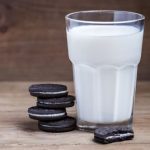 Space
Space  Space
Space  Humans
Humans 10 Unique Ancient Peoples Whose Cultural Footprints Still Shape the World
 Technology
Technology 10 Inventors Who Died Before Seeing Their Creations Succeed
 Crime
Crime 10 Shocking Crimes Where the Perpetrator Walked Free
 Creepy
Creepy 10 Representations of Death from Myth, Legend, and Folktale
 Space
Space 10 of the Weirdest Ways the Universe Works
 Weird Stuff
Weird Stuff 10 Crazy News Stories No One Expected to Read in 2025
 Crime
Crime 10 Bizarre Cases of Killer Seniors
 Technology
Technology 10 Signs That “Made in the U.S.A.” Still Lives
 Music
Music Top 10 Songs That Tell Stories Better Than Books
 Space
Space 10 Surprising Things Found or Left on the Moon
 Humans
Humans 10 Unique Ancient Peoples Whose Cultural Footprints Still Shape the World
 Technology
Technology 10 Inventors Who Died Before Seeing Their Creations Succeed
Who's Behind Listverse?

Jamie Frater
Head Editor
Jamie founded Listverse due to an insatiable desire to share fascinating, obscure, and bizarre facts. He has been a guest speaker on numerous national radio and television stations and is a five time published author.
More About Us Crime
Crime 10 Shocking Crimes Where the Perpetrator Walked Free
 Creepy
Creepy 10 Representations of Death from Myth, Legend, and Folktale
 Space
Space 10 of the Weirdest Ways the Universe Works
 Weird Stuff
Weird Stuff 10 Crazy News Stories No One Expected to Read in 2025
 Crime
Crime 10 Bizarre Cases of Killer Seniors
 Technology
Technology 10 Signs That “Made in the U.S.A.” Still Lives
 Music
Music Top 10 Songs That Tell Stories Better Than Books
10 Incredibly Specific Oreo Facts You’ll Think About at 2 A.M.
You’ve twisted them, dunked them, and crumbled them into milkshakes—but odds are, you don’t really know Oreos. Behind the world’s best-selling cookie is a labyrinth of marketing manipulation, food science secrets, and flavor experiments so bizarre they’re hidden from the public. These aren’t your standard “Oreo was invented in 1912” trivia tidbits. These are the snack aisle’s shadowy corners: the legal loopholes, the viral lies, the space missions, and the prototype cookies that shattered under their own weight.
Here are 10 incredibly strange, entirely true Oreo facts you’ll never unsee.
Related: Top 10 Cool Facts about 7-Eleven
10 Hydrox Came First—and Nabisco Made Sure You’d Forget That
Most people think of Hydrox as a knockoff Oreo, the off-brand version your aunt bought when she refused to spring for the real thing. But Hydrox actually hit shelves four years earlier than the Oreo, debuting in 1908 through the Sunshine Biscuit Company. It was the original chocolate sandwich cookie—crisp, less sweet, and made with real cocoa and a cream filling that resisted melting. The name “Hydrox” came from the words “hydrogen” and “oxygen,” meant to evoke purity and cleanliness. Unfortunately, it also sounded like a household cleaner.
When Nabisco launched the Oreo in 1912, they didn’t just replicate the sandwich format—they marketed it harder, sweetened the flavor, and refined the cookie’s texture to be more indulgent and “American.” The Oreo was an immediate success. Nabisco leveraged national advertising campaigns and grocery store placement deals to drown Hydrox in its wake. By the mid-20th century, Oreo wasn’t just winning the market—it was reshaping consumer memory.
To make matters worse, Hydrox disappeared completely in 1999 after being bought by Keebler and quietly phased out. A small fan-led revival in 2015 attempted to reintroduce the cookie under Leaf Brands, complete with anti-Oreo marketing. While still sold in limited regions today, Hydrox never regained its legacy. Oreo didn’t just win the cookie wars—it rewrote history in the process.[1]
9 That Filling? Legally, It’s Not “Cream”
Ever notice that Oreo packaging calls it “creme” instead of “cream”? That’s not a typo or some quirky brand spelling—it’s a legal workaround. According to FDA standards, a food labeled as “cream” must contain a minimum percentage of milk fat. Oreo’s iconic white center contains zero dairy, which makes it a crème by regulation—a word used when something looks or tastes like cream but doesn’t actually qualify as one.
So what is Oreo crème made of? The core ingredients are sugar, palm and/or canola oil, soy lecithin (an emulsifier), and artificial flavor. There’s no butter, no milk, and no vanilla bean. The smooth, fluffy texture is achieved through a whipping process that incorporates air into a stabilized oil mixture. Nabisco has never fully disclosed its proportions, but former employees have revealed that the machinery is designed to create a highly uniform swirl, mimicking the look of real dairy-based frosting.
Despite lacking any real cream, Oreo’s crème center has become one of the most recognizable food textures in the world. It’s a little food-industry sleight of hand: make something fake taste good enough, and no one notices the real thing is missing.[2]
8 The “Double Stuf” Lie Was Proven by Math
The name Double Stuf Oreo implies you’re getting exactly twice the filling of a regular Oreo, but that’s never been true. In 2013, a high school math teacher named Dan Anderson and his students at a New York school decided to test the claim using basic measurement and logic. They scraped the filling from dozens of regular and Double Stuf Oreos, weighed them on a digital scale, and averaged the results. What they found was that Double Stuf Oreos only contained about 1.86 times the filling of a standard cookie.
Anderson published the class’s findings in a blog post that quickly went viral. Journalists picked up the story, and Nabisco was asked to respond. Their reply? “Our recipe for the Oreo Double Stuf cookie has double the stuff, or creme filling when compared with our base, or original Oreo cookie.” However, they never clarified whether “double” meant an exact weight or just a general marketing term.
Ironically, this wasn’t even the only time Oreo played fast and loose with filling claims. The later-released Mega Stuf Oreo was supposed to be a crème overload, but studies found it had 2.68 times the regular amount—again, not triple, despite the implication.[3]
7 Oreos Are Technically Vegan—But That’s Contested
You might be surprised to learn that most classic Oreo flavors contain no animal-derived ingredients. That’s right—no milk, eggs, butter, or lard. The crème filling, as artificial as it is, is completely dairy-free. This has led many casual snackers and even prominent vegan influencers to dub Oreos “accidentally vegan.”
However, Nabisco (and its parent company, Mondelez) has never certified Oreos as vegan. The reason? They’re made in facilities that also handle milk products, and the company says there’s a risk of cross-contact—tiny, unintentional exposure during processing. For many vegans, especially those who follow the diet strictly for ethical or religious reasons, that risk is enough to avoid them. Others argue that the amount is so negligible that it doesn’t violate the spirit of veganism.
Adding to the complication is the regional variation in ingredients. Some international Oreo products contain dairy or whey, particularly in limited-edition flavors and ice cream collaborations.[4]
6 You Can Buy Oreo Cologne (If You’re Lucky)
In 2018, Oreo China launched a marketing stunt that most brands wouldn’t dare attempt: they released an Oreo-scented body spray as part of a campaign targeting teens and young adults. Dubbed “Oreo Spicy Chocolate Perfume,” the limited-edition cologne was bundled with candy products and given to influencers across Asia. It smelled like a mix of sweet cocoa, artificial vanilla, and a faint hint of spice.
Although it wasn’t widely sold in stores, a few hundred bottles were produced and distributed during pop-up promotions and livestream events. Online resellers quickly inflated prices for unopened bottles, which today can fetch $50–$100 on collector sites. While never sold outside Asia, the novelty of cookie-scented perfume sparked online conversations in the West.
In a world where Cheetos has a makeup line, and KFC made a fried chicken bath bomb, maybe Oreo cologne was just ahead of its time.[5]
5 They Once Released a Cookie So Fragile, It Required Special Boxes
When Oreo launched The Most Stuf in 2020, it was their boldest crème-heavy cookie yet—featuring nearly four times the filling of a regular Oreo. It was a social media sensation: absurd, indulgent, and tailor-made for unboxing videos. But behind the scenes, Oreo’s R&D team had quietly pushed the crème envelope even further. They created a prototype Oreo so overstuffed that it collapsed under its own weight during standard shipping. Internally, it became known as The Monster Stuf.
The problem wasn’t the crème—it was the cookie. Oreo wafers are thin and crispy, designed to hold a much smaller filling. Stack too much crème between them, and they snap under light pressure. In testing, Monster Stuf cookies shattered en masse inside shipping containers. Nabisco had to ship a small test batch in foam-lined boxes with custom compartments.
Ultimately, Monster Stuf was shelved. But if you’ve ever opened a pack of Most Stuf and found broken cookies, now you know why.[6]
4 Oreos Have Been to Space
While freeze-dried strawberries and Tang are the stereotypical space snacks, Oreos have actually hitched a ride into low-Earth orbit more than once. Astronauts aboard the International Space Station (ISS) are allowed to bring along a small stash of personal comfort items, and Oreos have made several appearances. Their individually wrapped packaging, long shelf life, and nostalgic value make them an ideal morale booster in the sterile environment of a space module.
One of the earliest mentions of Oreos in space came from astronaut Sunita Williams, who noted that junk food snacks were crucial for maintaining crew morale. While NASA’s official food program doesn’t list Oreos as standard fare, personal packages have been sent aboard SpaceX Dragon capsules and Russian Soyuz missions. The crumbly nature of the cookie might seem like a disaster in zero gravity, but astronauts report that the crème acts like glue, keeping the halves from drifting apart.
In 2019, Oreo’s parent company, Mondelez, even discussed developing space-compatible snacks. Though not reformulated for orbit, Oreos have unofficially joined the pantheon of comfort foods reminding astronauts of home.[7]
3 The Cookie Itself May Be Religious Symbolism
Ever looked closely at an Oreo? Not just the crème or logo, but the intricate pattern on the cookie’s surface? It’s not random. The design has long inspired speculation among food historians and conspiracy theorists. Centered on the wafer is a shape resembling the Cross of Lorraine—a two-barred cross historically linked with the Knights Templar and French heraldry. Surrounding it are a dozen four-leaf clover-like dots arranged with geometric precision.
There’s no official documentation from Nabisco explaining the design. But the use of such an iconic symbol—one associated with strength, faith, and resistance—has sparked plenty of wild theories. Some even claim that the Oreo embossing contains Masonic iconography, while others attribute it to pure branding aesthetics.
The current embossing was introduced in 1952 when Nabisco revamped the Oreo’s appearance. The graphic artist remains unknown. Whether intentional or not, the mysterious symbols have become a permanent—and endlessly interpretable—part of Oreo lore.[8]
2 Oreo Filling Is Manufactured Using a Secret Machine
The process of making Oreo crème isn’t just proprietary—it’s deeply guarded. The iconic white filling is produced using specialized industrial machines that Nabisco insiders call “crème-ers,” a term so obscure that even some food manufacturing veterans weren’t aware of it until recent interviews with former employees.
These crème-ers whip the mixture into a precise texture and density, then deposit the filling between wafers with exacting consistency. Factory tours skip this step entirely. Visitors can watch the wafers get baked and stamped, but when it comes to the crème, access is restricted, and cameras are banned. Even on-site engineers are often assigned to only one segment of the crème line.
The crème-ers are calibrated to fractions of a gram. Even a small temperature change can throw off the signature swirl. Nabisco has so closely fine-tuned the process that no knockoff brand has replicated the texture and taste.[9]
1 There’s an Entire Oreo Flavor Lab That’s Off-Limits to the Public
Buried within Mondelez’s corporate infrastructure is a division nicknamed the Oreo Flavor Lab, where food scientists and marketers develop new, sometimes outrageous, Oreo varieties. It’s responsible for flavors like Pumpkin Spice, Firework (with popping candy), and Cherry Cola. But those are just the ones that made it to shelves.
Leaks from former employees and journalists reveal far weirder creations: Buffalo Chicken Wing, Pickled Mango, Beef Teriyaki, and even a carbonated Oreo designed to fizz on your tongue. Many of these flavors were created for internal research or international market testing and were never intended for public consumption.
Security around the Flavor Lab is intense. Employees must sign non-disclosure agreements (NDAs), and even company insiders require clearance to view prototypes. Some flavors are sent to focus groups in China or Brazil, where consumer preferences differ wildly from the U.S. It’s Oreo’s equivalent of Area 51—a place where no flavor is too wild to try… once.[10]








